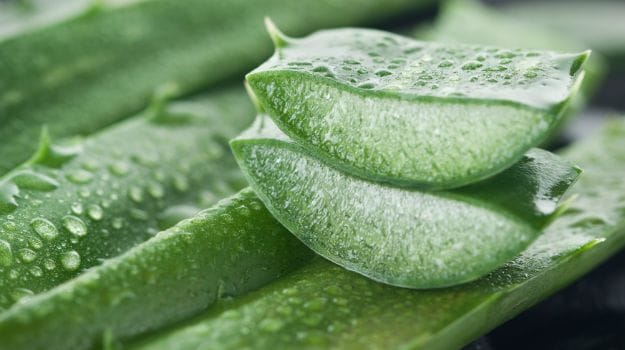
The green-cactus looking plant that sits out in your garden isn’t just a plant with its roots in folklore, it’s the crux of a million dollar industry that extends from beauty creams to healthy juices and diet supplements. Over time, aloe vera has seamlessly integrated itself into everything we use. But what makes this miracle plant so distinguishable?
The aloe vera plant is about one or two feet tall with prickly and bitter leaves, which act as a defence to keep animals and insects from feeding on the plant. The leaves hold a gooey translucent gel, also extremely bitter, and known all over the world for it’s unbelievable healing properties. This translucent gel is made up of around 96% water, some organic and inorganic compounds, a type of protein which contains 18 of the 20 amino acids found in the body and lastly, Vitamin A, B, C and E. Another part of the aloe vera plant which is used is the ‘sap’, a yellow-coloured liquid stuck to the skin of the plant from the inside. When dried and purified, the powdered aloe is often used as a laxative, though it’s effectiveness is questionable.
One of the most crucial elements found in aloe vera gel is a complex carbohydrate known as acemannan. It allows nutrients to reach the cells, nourish them and at the same time relieve them of toxins. Ayurveda, Chinese herbal medicine and British herbal medicine have all advocated aloe vera as a healer, when applied or consumed orally. Let’s go over some of its most prominent benefits.
Aloe Vera for Beauty
Bill C. Coats writes, “Since the skin needs nutrition of its own, Aloe Vera, when formulated into a properly designed personal care regimen, can treat, exfoliate, restore, reveal and provide constant, impressive nutrition to the human skin.” And we’re about to show just how you can do that. Once you move past the slimey texture of natural aloe vera gel and apply it to your skin, you’ll notice how soothing and cooling it is. And it’s for these exact reasons that Ayurveda refers to aloe vera as the miracle herb that can be used to treat wounds, minor cuts, dry skin and severe burns.
